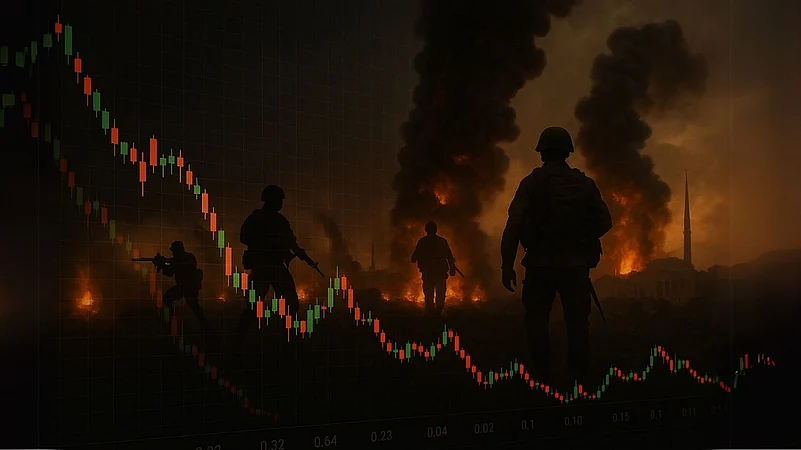Renewed geopolitical tensions between Israel and Iran, the ongoing uncertainty around US tariff policy, concerns over rising costs of oil imports, a weakening rupee and rising US bond yields kept the stock market under pressure throughout last week.
These concerns outweighed the positive sentiment from a further ease in domestic inflation and encouraging progress in US-China trade negotiations.
The selling was broad-based, as the Nifty Midcap 100 too lost 1.32 per cent and the Nifty Smallcap 100 also shed 1.12 per cent during the week.
Rate-sensitive sectors, such as real estate, banking, and auto were under pressure the previous week, as investors booked profits amid broader market weakness, according to Ajit Mishra, senior vice president, research at Religare Broking.
FMCG and metal stocks also declined, tracking weak sentiment. However, the IT and pharma sectors bucked the trend and ended the week with gains, he said.
Stock Market Next Week: Key Events To Watch
Going ahead, the week, from June 16-20, is lined up with several events that are likely to shape the market direction and influence investor sentiment.
Israel-Iran Conflict: In the early hours of June 13, Israel launched a series of precision strikes against Iran’s nuclear and missile facilities under the codename Operation Rising Lion, escalating the long-simmering conflict between the two countries. In retaliation, Iran launched waves of ballistic missiles at Israeli cities and military sites later the same day.
The latest conflict also comes amid US President Donald Trump’s fragile attempts at negotiating a fresh agreement with Iran to limit its nuclear activities. As of now, the agreement stands in a limbo amid the recent conflict.
For decades, Israeli leaders have viewed Iran’s nuclear program as an existential threat to their country and have repeatedly warned that they would take decisive actions to prevent Iran from acquiring nuclear weapons. The recent airstrikes appear to be a culmination of this long-standing view on Iran.
The International Atomic Energy Agency’s (IAEA) declaration that Iran was non-compliant with its non-proliferation obligations just a day ahead of Israel’s airstrikes, added further fuel to the fire.
Market participants will be closely watching for more developments on this space.
Concerns Over Rising Oil Import Costs: The Iran-Israel geopolitical tension led to a sharp surge in crude oil prices. After the airstrikes, the widely traded Brent Crude Oil Futures climbed over 13 per cent in a single session on June 13, before paring some gains to settle with a 7 per cent gain at $74.23 a barrel.
This triggered a fall in the shares of domestic downstream oil companies like Hindustan Petroleum, Bharat Petroleum, Indian Oil Corporation, and Reliance Industries, amid concerns of rising oil import costs. Likewise, the oil-dependent sectors, such as aviation, paint, tyre, and gas too are being thought to be negatively affected.
A further escalation in the Israel-Iran war is likely to impact these sectors negatively.
Weakening Indian Rupee: The rupee has seen a sharp decline against the dollar, emerging as one of the worst-performing Asian currencies in recent days.
According to Dilip Parmar, senior research analyst at HDFC Securities, the drop is largely due to heavy foreign fund outflows, a broad shift toward risk aversion in global markets, rising crude oil prices, and the dollar’s renewed strength as a safe-haven asset following Israel’s airstrikes on Iran.
“The rupee traded very weak below 86.05, down by 0.52 rupees, despite a softer dollar index, as risk sentiment deteriorated sharply following Israel's attack on Iran,” said Jateen Trivedi, vice president, research analyst - commodity and currency, LKP Securities. He also noted that the surge in crude oil prices added further pressure on the rupee.
US Federal Reserve Meet: Investors will be closely watching the US Federal Reserve’s policy meeting outcome set to be announced on June 18, as it tries to balance a weakening job market with inflation that’s still too high.
Though the US Fed is largely expected to keep interest rates steady, investors will be watching for signs of possible rate cuts in the near future. The current rate has stayed between 4.25 per cent and 4.50 per cent since the US Fed last cut it in December.
Other Macroeconomic Developments: Further, India’s May wholesale price index (WPI) inflation and trade data due on June 16 will be watched closely.
Globally, eurozone inflation and US jobless claims, both set to be out on June 18, will offer fresh cues on economic health.
Investors will also be tracking the Bank of Japan’s policy decision on June 17, and any fresh updates on US trade negotiations.











